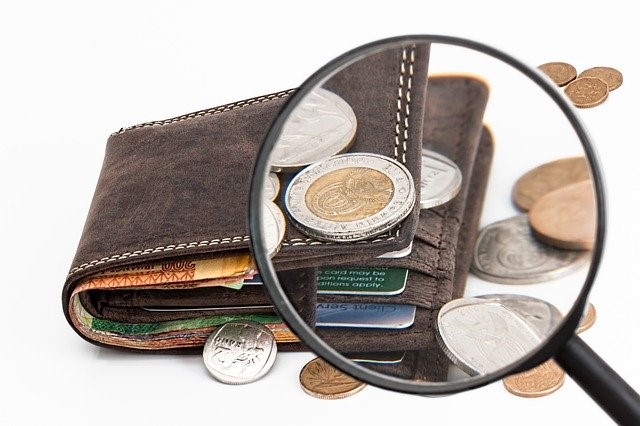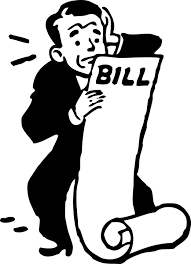Welcome to my home! This is a debt-free learning community. Leave any self-doubt and judgments outside to make room for growth.
Ok, have you ever talked to a personal finance coach or listened to a financial expert on talk radio, tv, podcast, etc?
Ever heard the term Snowball Method? I’m 100% confident you have heard about it at least twice today while researching budgeting information.
However, I find it interesting they never mention the Avalanche Method.
That is what I want to discuss with you today. The entire goal of Howtobudget.com is not only to teach you how to set up a budget or be your support system but to also make sure you are aware of what your options are.
Let’s take a look at the definitions, pros, and cons of each method. Then we are going to cover how to choose the right method for your situation.
Snowball Method
With this method, the goal is to pay off the smallest debt first. Only the minimum balances will be paid on your other debts. The idea is to see progress quickly to give you motivation.
Also, the smallest debt you are paying off is the only debt receiving a payment that is larger than the minimum balance.
Once that small debt is paid off, the payment it was receiving each month will be applied toward the next smallest debt. Starting to see the snowball?
Every time a debt is paid in full its monthly payment gets added to what you are already paying on the next debt.
Example: I just paid off a debt and I have now freed $115 per month in my budget. My next smallest debt is being paid a monthly payment of $170. I can now pay that next debt $285 (115 + 170) per month.
As you pay off more and more debts you will be able to start paying bigger payments off of your next debt. You will eventually start being able to pay $400 to $500 to one debt.
How much stress does the thought of achieving that relieve? It is an amazing feeling to see those bills drop quickly. The trick is just getting started.
Reasons to choose the snowball method
1. You don’t have enough extra cash to pay more than the minimum payment on your debt that qualifies for the debt avalanche method (this definition is explained next).
2. You will have enough leftover cash to start building an emergency fund with the freed cash. $20 per month is more than enough to get started. Having $1,000 cash on hand could save you in the long run for unexpected expenses.
3. This prevents your budget from being too restrictive toward daily life. Even though you are paying off a debt you should be able to enjoy your life.
4. Ideally, you’ll be able to pay off your first debt within 6 to 9 months.
Something to consider: my largest debt is my consolidated student loans equaling roughly $34,000. This will take me at least 10 years to pay off if I only pay $200 per month.
If I follow the rules of the debt snowball I will be able to make $1,000 payments per month without a second income. That amount will be paid off in 2 years rather than the 10-year option.
**Several studies show that the snowball method has a higher success rate and is more motivational in the long run. This is because you are able to eliminate more debt payments faster.
The downside of the snowball method
1. This isn’t a payoff everything overnight kind of approach. Depending upon how much debt you have it could take you anywhere from 1 year to 5 years to officially become debt-free.
**Originally, I was $80,000 in debt with my two credit cards and student loans. Ugh, student loans. The entire pay off journey for this amount (for me) is 5 years. I have 2 years down and 3 more years and $48,000 to go!
2. You will pay more in interest since you are choosing the debt-based off of its short payoff timeline rather than by the interest rate.
**Expect unexpected expenses to set back your pay off journey. However, establishing an emergency fund could prevent a set back from happening.
More Articles You May Be Interested In:
How to Save Money on a Tight Budget
What Happens If I Don’t Pay My Credit Card Bill
How a Grocery Price List Can Save You Money
Avalanche Method
This one is similar to the snowball method but you will want to focus on paying off the debt with the highest interest rate instead. Usually, the debts with the highest interest rates are also the ones with the largest balance.
Reasons someone would choose the avalanche method
1. In the long run you will actually pay less in interest
2. You are able to make payments larger than the minimum balance on your highest interest rate debt, even if it is your largest payment. It is possible to start with the debt snowball and then switch to the Avalanche Method.
The downside to the Avalanche Method
1. Since you are probably paying off your largest debt first your budget is more restrictive. It has to be in order to scrape enough money together to pay a little extra on that monthly payment.
2. Building an emergency fund in the first year or so won’t be able to happen. Your disposable income is strapped.
3. Several academic case studies show that individuals lose motivation to pay off debt because it takes a lot longer to see a win. In some cases it could take 2-3 years.
How do I choose a method that works for me?
It depends upon your situation but I’m here to help you out. Storytime!
When I started paying off my debt I looked at how much all of my expenses cost me per month. I only factored in the minimum payments on everything with interest.
Then I looked at how much I received in wages per month. I knew that putting money aside every month in my emergency fund was top priority for me.
I didn’t want to have to finance a broken furnace or a broken-down car. Granted I don’t foresee either of these things happening any time soon but these are examples of unexpected expenses that can occur.
With the avalanche method I only had an extra $50 to my name for the month…that was it! This is also with trying to put money aside in my emergency fund.
I would’ve had to make an extra $100 payment on my highest interest debt in order to get it paid off within the first year.
If I used the snowball method I would have an extra $150 per month to my name. Plus my smallest debt, which I was paying $50 per month on, would be paid off in 9 months.
I only needed to pay an extra $65 per month on that debt to make it happen. Uh, yes, please!
I also knew that if I didn’t get a loan paid off within the first year of starting this process I would lose motivation being a one-income household.
Yes, the accountant would lose motivation…the irony, right? So I chose the debt snowball method.
More Articles You May Be Interested In:
How to Save Money on a Tight Budget
What Happens If I Don’t Pay My Credit Card Bill
How a Grocery Price List Can Save You Money
Things to keep in mind before choosing your method
The avalanche method will only save you $200 to $500 in interest in the long run. Unless you owe almost $1 million or more then you might save a few thousand.
The method that is right for you is the one that will keep you motivated.
Also, when a bill is paid in full you don’t have to add the freed-up payment to the next one if you don’t want to. You can add it to your emergency fund (savings account) to keep on hand for disposable income.
You are in control of your budget. Only do what makes you comfortable.
This doesn’t mean shopping money. It means, “Holy cow the furnace or A/C just went out. Hey, I have enough cash to pay for that!”
Not having to finance an unexpected expense is always the direction you want to move in.
Finally, stop using your credit cards. I know I know, I’m a cruel lady. This will be very tough the first 3-9 months but you would be amazed how many items you can wait to purchase until later.
If you continue to use your credit cards while you are in debt pay off mode then you will cause the minimum balances on those cards to increase drastically from month to month making it even harder to stick with your goals.
What to do now?
Now comes the easiest part, decide which method will work best for your situation. Set up your budget then decide which bill you want to start paying extra on.
Just remember, when deciding how much extra to pay on a bill, stay within your financial means. In other words, don’t expect yourself to be able to live off of $25 in your checking account when you are between paydays.
If you can only afford to pay an extra $10 on that bill then that is perfect. That is $10 closer each month you are to having that debt paid off. Getting that first debt paid off is half of the battle. I promise, once you get started it will become easier each month.
Remember, you are not in this alone!
If you have questions at any time or are looking for information on something you aren’t finding here please email me at ask@howtobudgetnow.com.
Guess what? I have completed my ebook How to Save Money on Your Utilities and it’s FREE! Who couldn’t use a little extra cash each month?! Just subscribe to my email list below and you’ll automatically receive it by email…instantly!
You will not receive spam emails. I cannot STAND to receive those. Instead, you will receive my weekly posts directly in your inbox on Wednesday so you will never miss a post.
[mc4wp_form id=”77″]
Subscribe and you'll receive our weekly posts right in your inbox. You'll also be one of the first to be notified when our free budget course opens. Hope to see you there!




